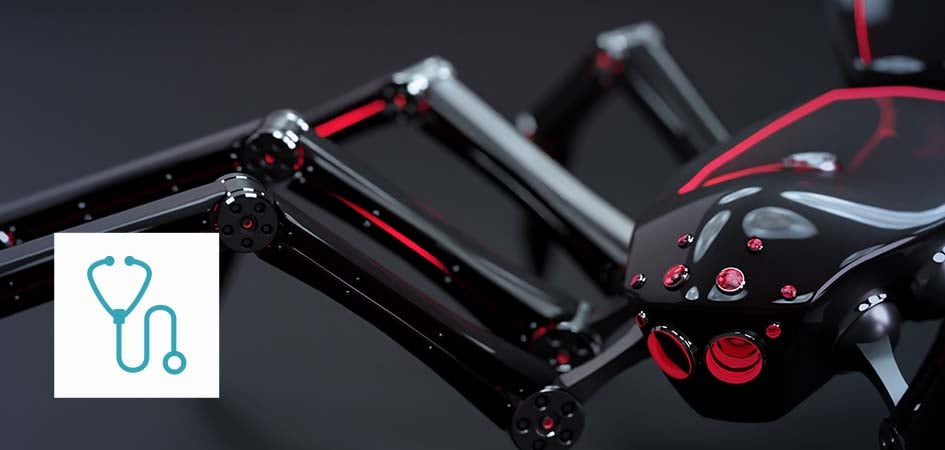Healthcare Industry on High Alert: Trustwave Research Reveals Cyber Threats Persist

Trustwave Research Reveals Cybersecurity Risks Threatening Patient Lives in Healthcare. Learn More
Get access to immediate incident response assistance.
Get access to immediate incident response assistance.
Trustwave Research Reveals Cybersecurity Risks Threatening Patient Lives in Healthcare. Learn More

Recent cyberattacks and the Department of Health and Human Services (HHS) Office for Civil Rights (OCR) research indicate the danger facing the healthcare industry is not subsiding, which means healthcare providers must maintain a high level of alert and continue to bolster their cyber defenses.
The New England-based health insurance firm Harvard Pilgrim Health Care recently disclosed that an April 2023 ransomware attack compromised about 2.9 million people in its system and the attack claimed by the BlackCat ransomware group on Change Healthcare impacted upwards of 15 billion health.
These are part of the ongoing trend that saw HHS report that ransomware attacks against healthcare organizations reached a new record, with 725 large breaches reported in 2023. While this is only slightly higher than the 720 reported in 2022, it is almost twice the number reported in 2018.
Trustwave is dedicated to helping healthcare providers improve their security posture and offering insights that can be used to protect, detect, and mitigate cyber threats. These can be found in the Trustwave SpiderLabs report Cybersecurity in the Healthcare Industry: Actionable Intelligence for an Active Threat Landscape.
Our research found the most active ransomware groups targeting the healthcare industry today are:
LockBit and BlackCat were each targeted by law enforcement operations, LockBit in February and BlackCat in December 2023, and may or may not be operating.
However, while BlackCat was actively on the attack, it specifically stooped to a new low for ransomware groups when it published photos of breast cancer patients as part of its extortion of Lehigh Valley Health Network, a Pennsylvania-based healthcare network.
Trustwave SpiderLabs also detailed how attackers used HTML smuggling and Qakbot malware to deploy ransomware, which mainly focused on these variants:
SpiderLabs research found multiple examples of healthcare data that was exfiltrated and put up for sale on the Dark Web. Selling the stolen data is part of the double-extortion variety of ransomware, in which the attacker threatens to sell or make public their victim's data if the ransom is not paid.
The healthcare industry heavily depends on third-party vendors, including cloud-based web hosting providers and software companies, to support its operations. Unfortunately, cybercriminals often target these third parties as a strategic maneuver – if they successfully breach a third-party vendor, they gain access to the targeted company's data. This poses a significant threat to healthcare organizations since many vendors lack robust cybersecurity measures and data breach protection.
In addition to the risks associated with third-party vendors, the proliferation of Internet of Things (IoT) devices in healthcare further amplifies the potential attack surface and vulnerability of the industry's infrastructure.
Recent supply chain headlines, like 3CX or the infamous SolarWinds, underscore the exposure that third-party vendors can expose healthcare organizations to. Because healthcare entities are classified as critical infrastructure, they are an attractive target for threat actors who aim to exploit their widespread access to compromise multiple entities across various sectors and industries. Supply chain attacks can pose a risk even to healthcare entities that protect their digital networks perfectly well.
Due to the recent zero-day vulnerability in MOVEit, a file transfer software, there has been much discussion about the risks associated with data sharing among organizations within an economy's supply chain or critical infrastructure. The MOVEit software is specifically used by multiple organizations in the Healthcare and Public Health (HPH) sector, including hospitals, clinics, and health insurance groups. HHS was impacted, stating that "attackers gained access to data by exploiting the vulnerability in the MOVEit Transfer software of third-party vendors."
From an IoT perspective, healthcare devices, such as heart monitors or pacemakers, are often developed with a hardware-first approach. However, when it comes to connecting these devices to a network, there is often a need for thorough security evaluation. As stated by the Federal Bureau of Investigation's Internet Crime Complaint Center (IC3), "Medical device hardware often remains active for 10-30 years. However, the manufacturer specifies underlying software life cycles, ranging from a couple of months to maximum life expectancy per device, allowing cyber threat actors time to discover and exploit vulnerabilities."
It is crucial for organizations to prioritize ensuring their suppliers adhere to stringent security measures to mitigate potential risks.
As we have noted, healthcare security leaders face a multitude of challenges when seeking qualified offensive security providers. The major pain point lies in the ability to not only identify vulnerabilities but also prioritize and remediate them efficiently.
As a leading provider of offensive security, Trustwave Consulting and Professional Services possesses all the tools necessary to conduct an effective review of a client's security program, including our just-introduced Threat Intelligence as a Service (TIaaS) solution.
Our team addresses key pain points by efficiently identifying and prioritizing vulnerabilities and offering expert advice and mitigation services. Trustwave CPS provides long-term support that goes beyond simply preventing attacks, helping organizations improve their overall security posture, and enhancing resilience and recovery capabilities.
Trustwave is a globally recognized cybersecurity leader that reduces cyber risk and fortifies organizations against disruptive and damaging cyber threats. Our comprehensive offensive and defensive cybersecurity portfolio detects what others cannot, responds with greater speed and effectiveness, optimizes client investment, and improves security resilience. Learn more about us.
Copyright © 2025 Trustwave Holdings, Inc. All rights reserved.